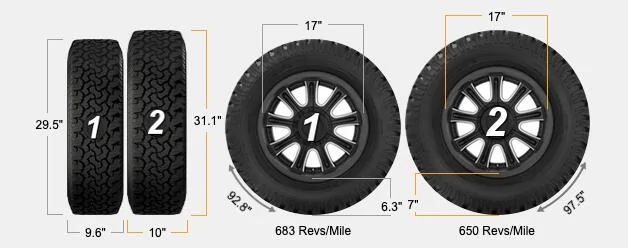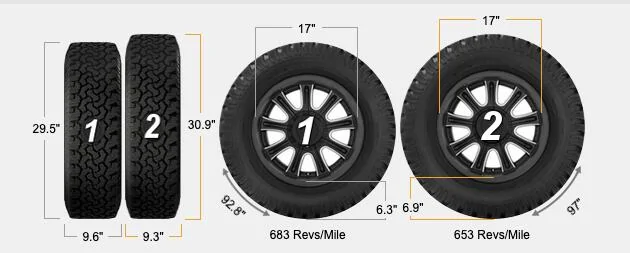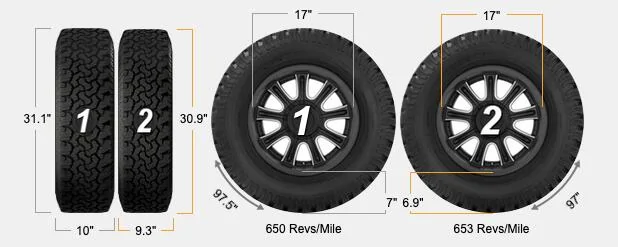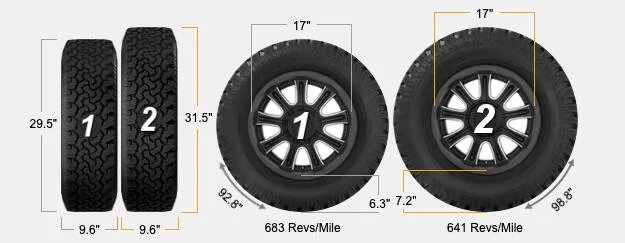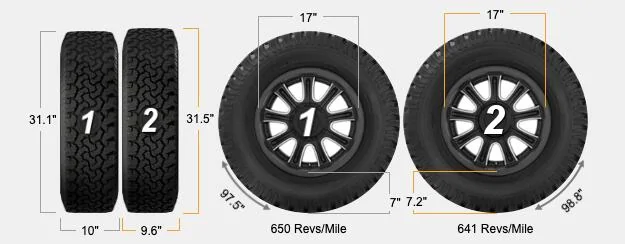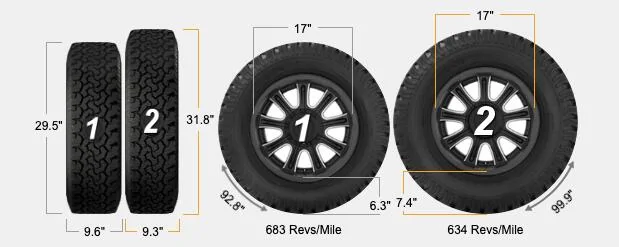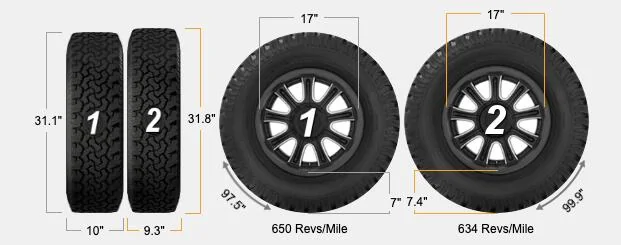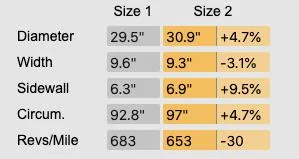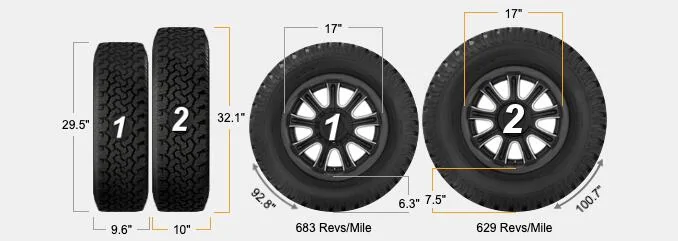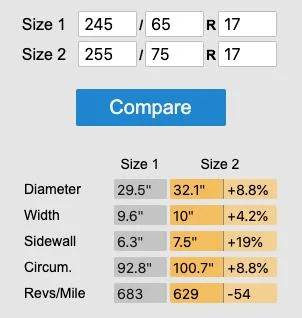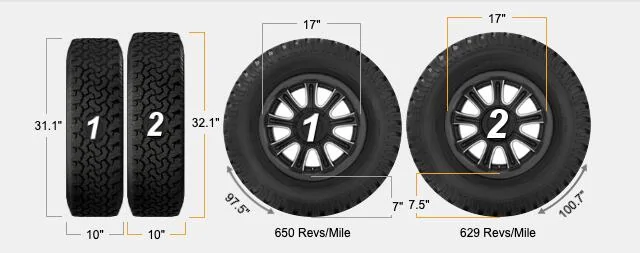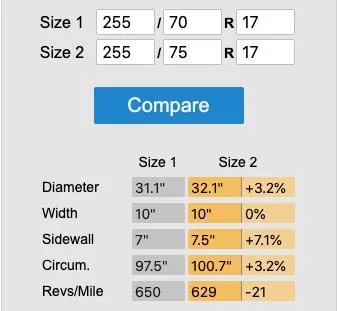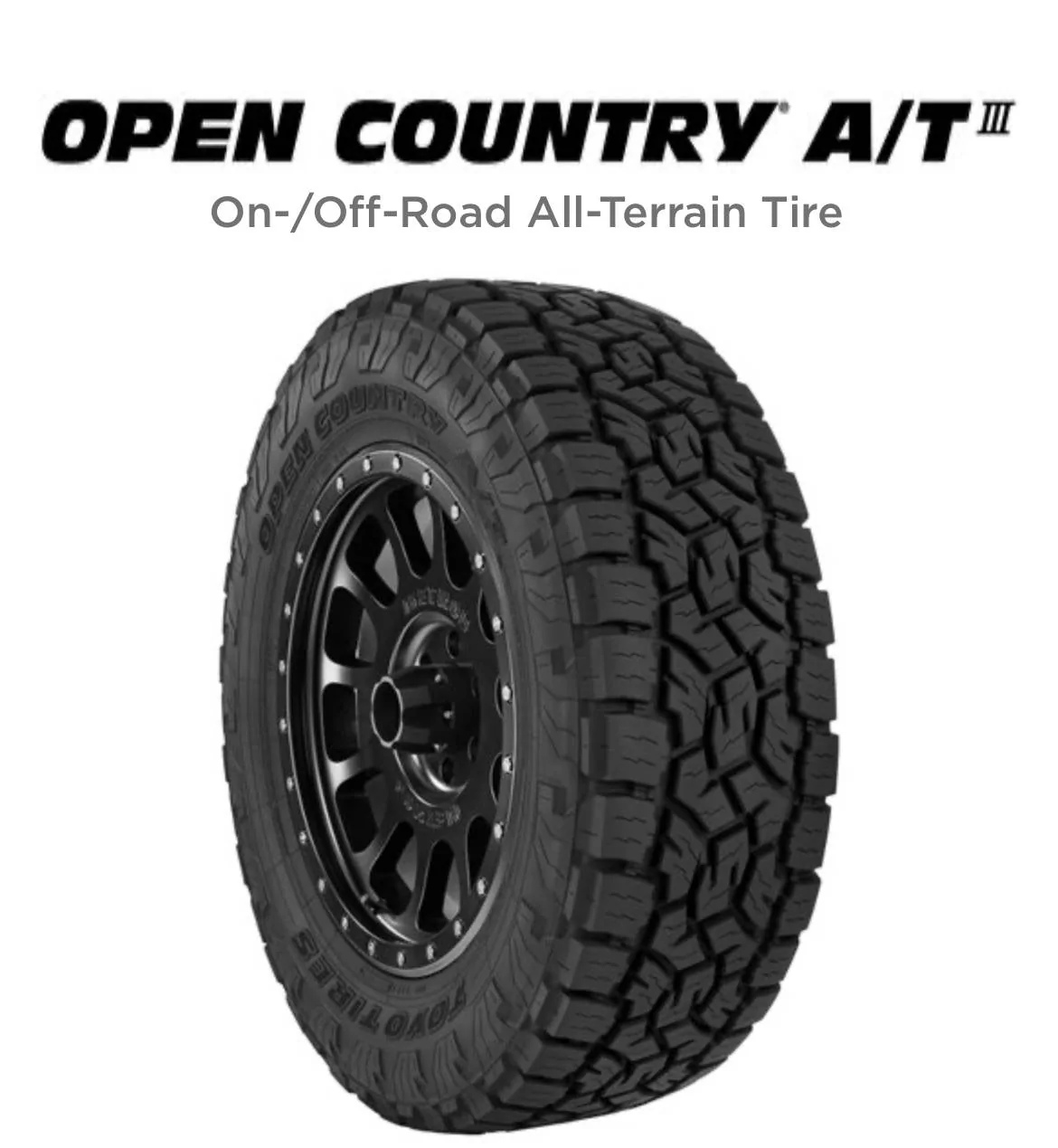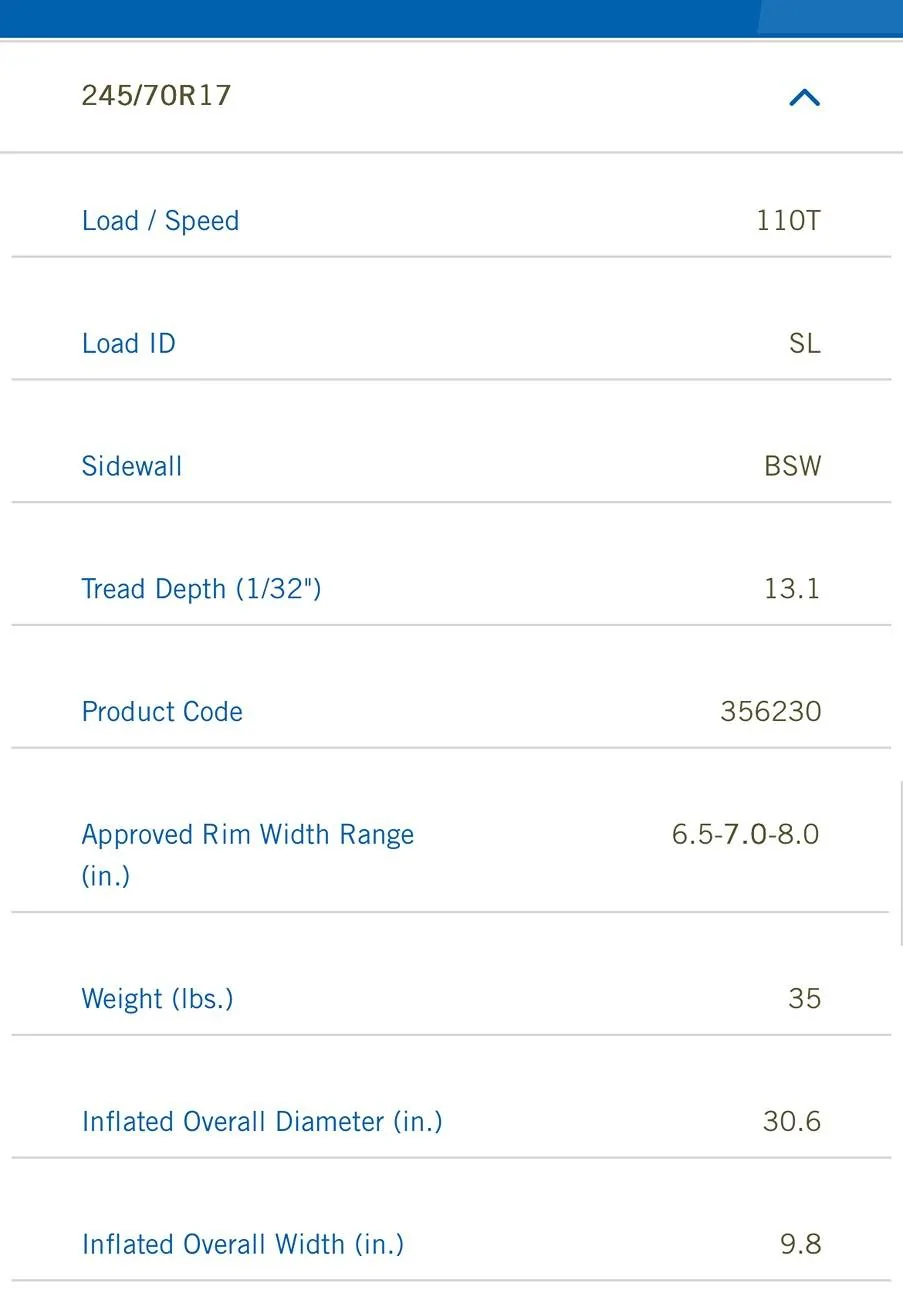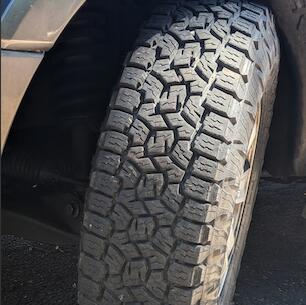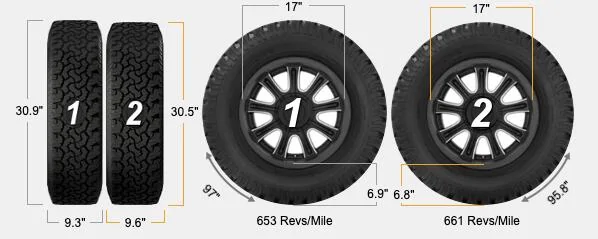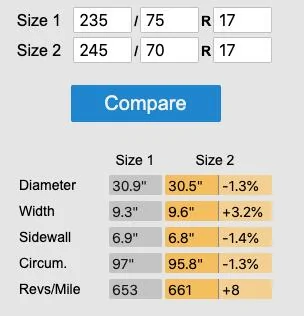AZFox
Well-Known Member
- Thread starter
- #1
@Cody posted an image showing a 245/75R17 tire on a Slate alloy wheel and it got me wondering...
The configurator says the Lift Kit provides "the chance to include 32" tires". (I have some doubts about that. What specific 32" tire size can be included?)
Fitting a bigger and heavier tire will degrade performance, reduce range, and increase wear on steering and suspension parts -- but by how much?
That's an important question because I have a sneaking suspicion that a big, heavy tire could disappoint, particularly if you plan on towing or hauling heavier loads.
Here are some things to consider.
Unsprung Mass
The steering and suspension components are put under extra stress when the whee-and-tire combination is heavier. A spring and shock that's been engineered for a certain weight of tire+wheel combination will work differently (sub-optimally) when you increase the tire+wheel weight.
Rotational Mass
Are there any bike enthusiasts here? If so, they're nodding about this one. The wheel+tire unit acts as a flywheel. When you increase the rotating mass it's harder to get the tire+wheel unit spinning (or slow it down, for that matter). This effect has two parameters: weight and diameter. Two tires of the same weight, but different diameters, will be different, where the larger one requires more energy to spin up and slow down.
Gearing Effect
When people plus-size tires on a typical 4x4 they can re-gear their differentials to compensate for larger tire diameter, bringing things back to normal. I doubt Slate will provide for any similar re-gearing capability. You can use revolutions-per-mile to determine the extent of this effect. For example, going from the stock size (29.5") to a 32" tire means 683 revs/mile reduces to 631 revs. If I'm mathing correctly, you'd need to change the final drive ratio by 7.5% to equalize the two sizes. Keep in mind, the Slate's drivetrain has only one gear.
(cont'd...)
The configurator says the Lift Kit provides "the chance to include 32" tires". (I have some doubts about that. What specific 32" tire size can be included?)
Fitting a bigger and heavier tire will degrade performance, reduce range, and increase wear on steering and suspension parts -- but by how much?
That's an important question because I have a sneaking suspicion that a big, heavy tire could disappoint, particularly if you plan on towing or hauling heavier loads.
Here are some things to consider.
Unsprung Mass
The steering and suspension components are put under extra stress when the whee-and-tire combination is heavier. A spring and shock that's been engineered for a certain weight of tire+wheel combination will work differently (sub-optimally) when you increase the tire+wheel weight.
Rotational Mass
Are there any bike enthusiasts here? If so, they're nodding about this one. The wheel+tire unit acts as a flywheel. When you increase the rotating mass it's harder to get the tire+wheel unit spinning (or slow it down, for that matter). This effect has two parameters: weight and diameter. Two tires of the same weight, but different diameters, will be different, where the larger one requires more energy to spin up and slow down.
Gearing Effect
When people plus-size tires on a typical 4x4 they can re-gear their differentials to compensate for larger tire diameter, bringing things back to normal. I doubt Slate will provide for any similar re-gearing capability. You can use revolutions-per-mile to determine the extent of this effect. For example, going from the stock size (29.5") to a 32" tire means 683 revs/mile reduces to 631 revs. If I'm mathing correctly, you'd need to change the final drive ratio by 7.5% to equalize the two sizes. Keep in mind, the Slate's drivetrain has only one gear.
(cont'd...)

